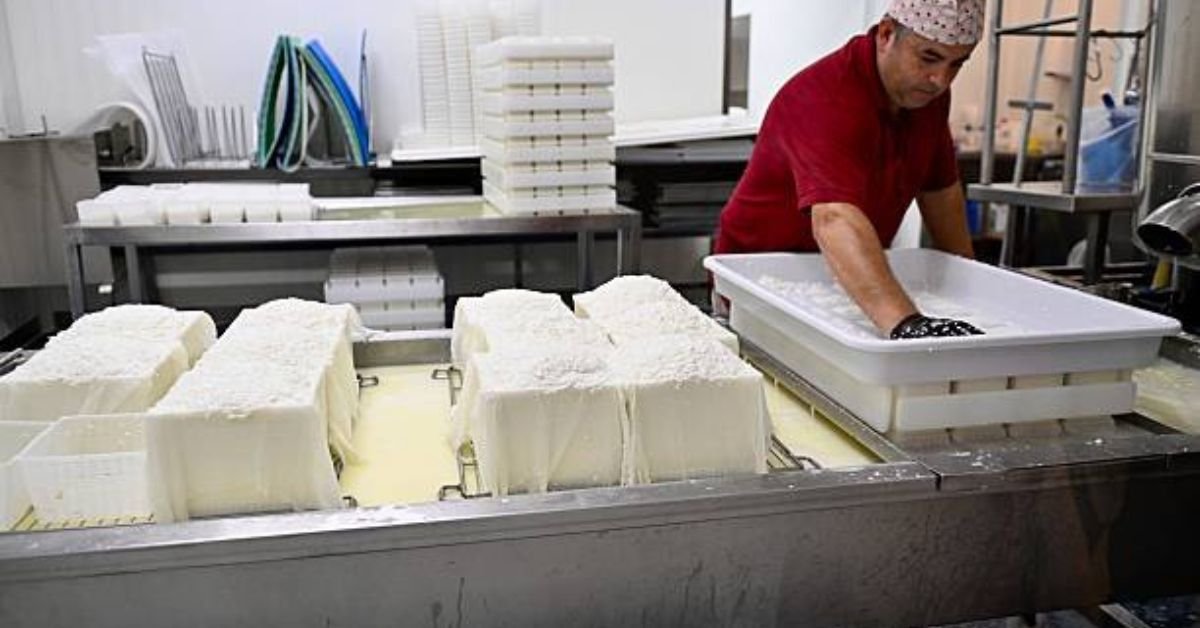BLOG
Breaking Ground: The Smart Way to Finance Land Ownership

Breaking Ground For those seeking to build a custom home, start a farm, or invest in real estate, purchasing land can be a smart, forward-thinking move. However, unlike traditional mortgages, land loans can be complex and often misunderstood. A land loan—used to finance the purchase of a parcel that doesn’t yet have a livable structure—comes with unique requirements, higher down payments, and more scrutiny from lenders. Understanding the nuances of land financing, including lender expectations, interest rates, and zoning laws, is essential for anyone considering this pathway to ownership.
The Types of Land You Can Finance Breaking Ground
Before applying for financing, it’s important to understand the different types of land you might purchase. Raw land refers to undeveloped property with no utilities or infrastructure—often the cheapest but riskiest investment. Then there’s unimproved land, which may have some access to utilities but still lacks a structure. Lastly, improved land is typically ready for development with roads, electricity, and water lines in place. The type of land you choose will significantly impact your financing options and loan terms.
Lenders view raw and unimproved land as high-risk assets due to their undeveloped nature. These parcels typically require a larger down payment, higher interest rates, and a detailed plan from the borrower explaining how the land will be used or developed.

How Lenders Evaluate Land Loans
Banks and credit unions approach land loans with more caution than traditional home loans. Since undeveloped land can be harder to resell in case of default, lenders often ask for a higher loan-to-value (LTV) ratio. Borrowers are usually required to provide a down payment of 20% to 50%, depending on the land’s characteristics and location.
Creditworthiness plays a major role in loan approval. A solid credit score—generally above 680—will improve your chances, especially when applying for loans through national or regional banks. Additionally, lenders evaluate the land’s marketability, zoning status, access to roads, and whether utilities are available. A professional land appraisal is almost always required to establish the property’s fair market value and determine its feasibility for development.
Financing Options: From Banks to Federal Programs
When it comes to borrowing options, traditional banks are one route, but they aren’t the only game in town. Many borrowers explore financing through credit unions or community banks that are familiar with the local real estate market. These institutions may offer more flexible terms and a better understanding of regional zoning regulations.
Another increasingly popular alternative is owner-financed land, where the seller offers a payment plan directly to the buyer, bypassing financial institutions altogether. While this can be more accessible for those with lower credit scores, interest rates are typically higher, and the legal protections may be fewer unless handled through a title company or attorney.
Government-backed loans can also assist in specific situations. For example, the U.S. Department of Agriculture (USDA) offers financing for land purchases in rural areas, especially for agricultural use or rural housing developments. These USDA loans are beneficial for those who meet specific income and location criteria, offering low-interest rates and reduced down payment requirements.
Combining Land Loans with Construction Loans
If you’re planning to build a home on your land in the near future, you may consider a construction-to-permanent loan. This hybrid option allows you to finance both the purchase of the land and the construction of a structure on it. During the building phase, you typically pay interest only, and once construction is complete, the loan converts into a traditional mortgage.

This approach can be financially efficient and appealing to lenders, as the presence of a permanent structure adds value and security to the property. However, you’ll need to present a detailed construction plan, secure all necessary permits, and undergo periodic inspections throughout the building process.
Legal Considerations and Zoning Laws
Zoning requirements are one of the most overlooked yet critical aspects of land ownership. Before finalizing your purchase or securing a loan, you must verify how the land is zoned—residential, commercial, agricultural, or mixed-use. Zoning laws affect what you can build and how you can use the property, which in turn influences your loan eligibility and development timeline.
It’s also crucial to conduct a title search and purchase title insurance. This ensures that there are no legal disputes, liens, or easements on the property that could interfere with your ownership. A land survey can also confirm boundaries and identify any encroachments, which are often required by lenders as part of the loan approval process.
Understanding Costs, Interest Rates, and Loan Terms
Land loans generally come with higher interest rates than conventional mortgages due to the increased risk. These rates can range from 5% to 10% or more, depending on the borrower’s financial profile and the specifics of the land. Loan terms are often shorter as well, usually spanning 5 to 15 years rather than the 30-year terms commonly seen in home loans.
Borrowers should also factor in additional costs, including property taxes, insurance, surveying fees, and utility installation. Because land doesn’t generate rental income or shelter, the carrying costs must be carefully considered when calculating long-term investment value.
Tips to Improve Your Chances of Approval
To strengthen your loan application, begin by improving your credit score and reducing any outstanding debt. Prepare a comprehensive development plan that outlines your intended use for the land, including timelines, contractor details, and construction budgets if applicable.
Having a higher down payment ready not only improves your chances of approval but can also reduce your interest rate and monthly payments. Choosing land with existing road access and nearby utilities also helps present a lower-risk profile to lenders.
FAQs
Q1: What is the minimum credit score needed to qualify for a land loan?
Most lenders require a credit score of at least 680, although some private lenders may consider lower scores with a higher down payment.
Q2: How much down payment is required to finance land?
Down payments typically range from 20% to 50% of the land’s purchase price, depending on its development status and location.
Q3: Can I get a land loan to build a house later?
Yes. You can apply for a land loan initially and later transition to a construction loan, or combine both through a construction-to-permanent loan.
Q4: Are interest rates higher for land loans?
Yes, they are usually higher than traditional home mortgages due to increased lender risk.
Q5: What type of loan is best for buying rural land?
USDA loans are ideal for rural land if you meet the income and property eligibility criteria. Otherwise, community banks or credit unions may offer specialized rural land financing.
Q6: Can I use land as collateral for another loan?
Yes, if the land is fully owned and has substantial equity, it can be used as collateral for personal or construction loans.
Conclusion
Financing land ownership is both a strategic move and a nuanced process that requires thorough research and preparation. From understanding zoning restrictions and loan-to-value ratios to securing the right type of lender, every step matters. Whether your goal is to build a home, launch an agricultural venture,
BLOG
Besos Meaning: A Journey into the Heart of Latin American Culture

Besos is derived from the Spanish language, where it translates to “kisses.” However, the meaning of besos goes beyond a simple translation. It’s a term that encompasses a range of emotions, from affection and love to passion and intimacy.
The Cultural Significance of Besos
In many Latin American cultures, besos are an integral part of daily life. They’re a way to show affection, greet one another, and express love. The cultural significance of besos is deeply rooted in the values of warmth, hospitality, and closeness.

The Different Types of Besos
While the term “besos” is often associated with romantic love, it’s not the only context in which it’s used. Besos can be exchanged between family members, friends, and even as a greeting or farewell.
- A beso on the cheek is a common greeting in many Latin American countries.
- A beso on the lips is often reserved for romantic partners or loved ones.
- A beso on the forehead or hand can be a sign of respect, affection, or blessing.
“I remember my abuela giving me besos on the forehead every night before bed. It was a special moment that made me feel loved and safe.”
The Emotional Significance of Besos
Besos are more than just a physical gesture; they’re a way to convey emotions and connect with others. The act of giving or receiving a beso can evoke feelings of comfort, security, and love.
FAQs
Q: What is the meaning of besos in Spanish?
A: Besos is the Spanish word for “kisses.” It’s a term used to describe a range of affectionate gestures, from romantic kisses to friendly pecks on the cheek.
Q: How do you use besos in a sentence?
A: You can use besos in a sentence to express affection or love, such as “Dale besos a tu familia de mi parte” (Give your family a kiss from me).
Q: What is the cultural significance of besos in Latin America?
A: Besos play a significant role in Latin American culture, where they’re used to show affection, greet one another, and express love.
Q: Can besos be used in non-romantic contexts?
A: Yes, besos can be used in non-romantic contexts, such as between family members or friends. It’s a way to show affection and closeness.
Conclusion
Besos, we discover that it’s more than just a word – it’s a way to connect with others and express our emotions. Whether you’re looking to deepen your understanding of Latin American culture or simply want to show affection to those around you, besos is a term that’s worth exploring further.
BLOG
Luxury Cruise Passengers: Staying Safe on the High Seas

Luxury cruises often traverse through exotic waters, some of which are notorious for piracy. The Gulf of Aden, the Indian Ocean, and parts of Southeast Asia are known hotspots where pirates have been active. These areas are often near popular cruise routes, putting luxury cruise passengers at risk.
Piracy Tactics: How Pirates Target Luxury Cruises
Pirates have become increasingly sophisticated, using tactics like GPS spoofing and fake ship identities to target unsuspecting vessels. They often look for easy prey, such as slow-moving ships or those with lax security. Luxury cruises, with their high-value passengers and cargo, can be attractive targets.
The Human Impact: Stories from Luxury Cruise Passengers
“I was on a luxury cruise in the Gulf of Aden when we received a piracy warning. The crew immediately took action, increasing security measures and altering our course. It was a harrowing experience, but thanks to their quick response, we were safe.” The fear and uncertainty that come with a piracy warning can be unsettling, but being prepared and knowing what to expect can make all the difference.
Staying Safe: Precautions and Measures for Luxury Cruise Passengers
To minimize the risk of piracy, luxury cruise lines have implemented various security measures. These include:
- Traveling in convoys or with naval escorts
- Implementing advanced security systems, such as radar and surveillance cameras
- Conducting regular security drills and training for crew members
- Increasing security personnel on board

What Luxury Cruise Passengers Can Do
While cruise lines take necessary precautions, passengers can also play a role in staying safe. Being aware of the risks and taking simple precautions, such as staying informed about piracy hotspots and following crew instructions, can help minimize the risk of piracy.
Piracy Warning Systems: How Luxury Cruises Stay Ahead
Luxury cruise lines use advanced piracy warning systems to stay informed about potential threats. These systems provide real-time updates on piracy hotspots and suspicious activity, enabling crews to take proactive measures to avoid danger.
The Role of Technology in Piracy Prevention
Technology plays a vital role in preventing piracy. Advanced systems, such as satellite tracking and AI-powered surveillance, help cruise lines stay one step ahead of pirates. These technologies enable crews to respond quickly and effectively in the event of a piracy warning.
FAQs
Q: What should I do if I receive a piracy warning on my luxury cruise?
A: If you receive a piracy warning, follow the instructions of your crew immediately. They are trained to handle such situations and will take necessary precautions to ensure your safety.
Q: Are luxury cruises more vulnerable to piracy than other types of cruises?
A: Luxury cruises can be attractive targets for pirates due to their high-value passengers and cargo. However, luxury cruise lines often have advanced security measures in place to minimize the risk.
Q: How can I stay informed about piracy hotspots and safety measures on my luxury cruise?
A: Your cruise line will provide you with information about piracy hotspots and safety measures in place. You can also stay informed through government travel advisories and industry reports.
Q: Can I travel safely on a luxury cruise despite the risk of piracy?
A: Yes, with the right precautions and awareness, you can travel safely on a luxury cruise. Cruise lines take piracy seriously and have measures in place to protect passengers.
Conclusion
Luxury cruise, staying informed about piracy risks and taking necessary precautions can help ensure a safe and enjoyable journey. By understanding the risks and being aware of the measures in place to prevent piracy, you can relax and enjoy your time on board.
BLOG
Mandarin for Mandarin: Tips and Tricks for Language Learners

Mandarin can be a rewarding and enriching experience, especially when you focus on learning Mandarin for Mandarin. By doing so, you can:
- Improve your pronunciation and intonation
- Develop a deeper understanding of Chinese culture and history
- Enhance your career opportunities in China or with Chinese companies
Immersing Yourself in the Language
One of the most effective ways to learn Mandarin for Mandarin is to immerse yourself in the language. This can be done by:
- Watching Chinese movies and TV shows
- Listening to Chinese music and podcasts
- Speaking with native Mandarin speakers
For example, “I started watching Chinese dramas with English subtitles and it really helped me improve my listening skills and get used to the natural flow of the language.”

Tips for Learning Mandarin for Mandarin
When it comes to learning Mandarin for Mandarin, there are several tips to keep in mind:
- Focus on tones and pronunciation
- Practice speaking and listening regularly
- Use language learning apps and resources
Using Language Learning Apps
There are many language learning apps available that can help you learn Mandarin for Mandarin. Some popular options include:
- Duolingo
- HelloTalk
- Pleco
FAQs
Q: What is the best way to learn Mandarin for Mandarin?
A: The best way to learn Mandarin for Mandarin is to immerse yourself in the language by watching Chinese media, speaking with native speakers, and practicing regularly.
Q: How can I improve my Mandarin pronunciation?
A: You can improve your Mandarin pronunciation by listening to native speakers, practicing speaking regularly, and using language learning apps that focus on pronunciation.
Q: What are some common challenges when learning Mandarin for Mandarin?
A: Some common challenges include mastering tones, understanding grammar and syntax, and finding opportunities to practice speaking and listening.
Q: Can I learn Mandarin for Mandarin on my own?
A: Yes, you can learn Mandarin for Mandarin on your own with the right resources and motivation. However, it’s also helpful to work with a language exchange partner or tutor to get feedback and support.
Conclusion
Mandarin for Mandarin requires dedication, persistence, and the right resources. By immersing yourself in the language, practicing regularly, and using the right language learning tools, you can achieve fluency and unlock new opportunities. Whether you’re a beginner or advanced learner, there’s always room to improve and refine your Mandarin skills.
-

 TECH6 months ago
TECH6 months agoApple iPhone 17: Official 2025 Release Date Revealed
-

 BLOG6 months ago
BLOG6 months agoUnderstanding the ∴ Symbol in Math
-

 EDUCATION6 months ago
EDUCATION6 months agoHorizontal Translation: How to Shift Graphs
-

 EDUCATION6 months ago
EDUCATION6 months agoUsing the Quadratic Formula
-

 EDUCATION6 months ago
EDUCATION6 months agoThe Meaning of an Open Circle in Math Explained
-

 HEALTH6 months ago
HEALTH6 months agoGoodNever: Wellness, Simplified
-

 EDUCATION6 months ago
EDUCATION6 months agoWhy Does m Represent Slope?
-

 EDUCATION6 months ago
EDUCATION6 months agoHow to Solve Quadratic Equations 2
